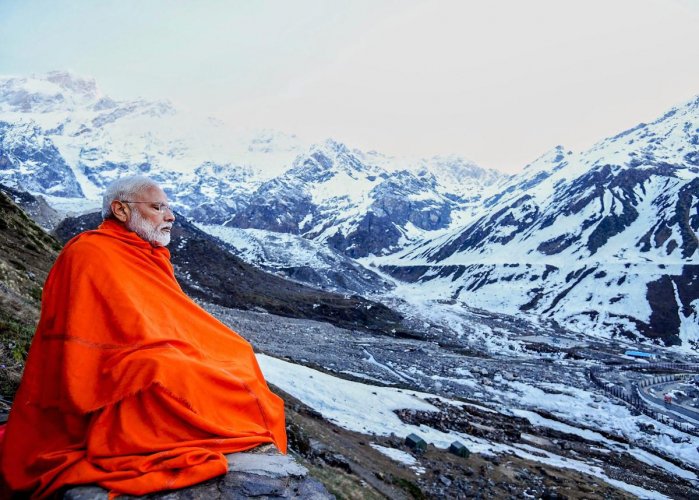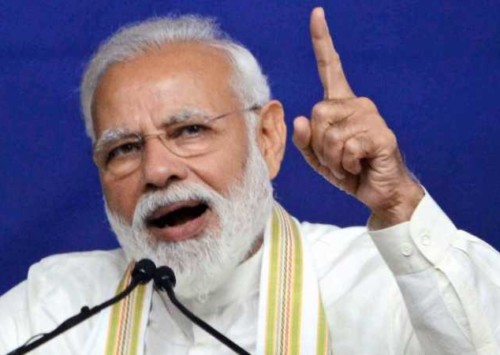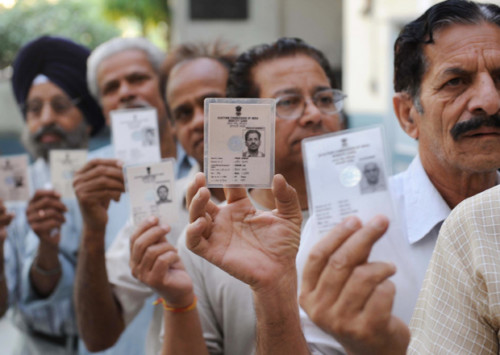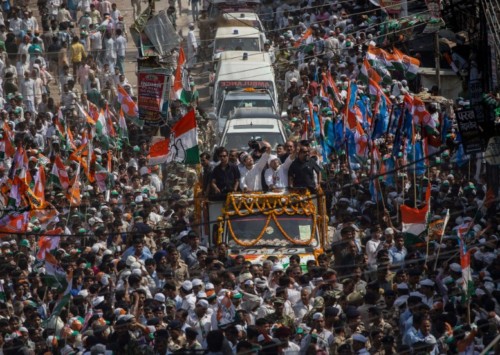Agenda for Modi 2.0
An important message was lost in the cacophony of support and ridicule that followed Modi’s surprise visit to the Himalayas last week.
The Himalayas have traditionally been one of the best spots in India for those seeking relaxation or spiritual balance in their lives. When Prime Minister Narendra Modi landed up in Kedarnath last week, he perhaps had both the objectives in his mind.
Followed by several media cameras, Modi walked the red carpet in the high altitude mountains, at nearly 3700 m, and meditated in a specially-built cave, once again while his images were being transmitted live on national television. The break was rather well deserved by Modi, coming as it did after a gruelling 39-day campaign in which he addressed 142 rallies all over the country in a seven-phased election that had 900 million registered voters in the world’s largest democracy.
Wrapped in a traditional Garhwali outfit, Modi was seen walking on a red carpet laid out snow-shovelled path with the backdrop of majestic and imposing wall of snow-clad Himalayas. Many termed it as serious and inspiring spiritual expedition, while others found it full of political motives and even unethical.
The real message, however, was grossly missed by media and lost in the thin air above the Himalayas. That message is embedded in the Himalayan background, which was clearly visible in the images that appeared in the media. They showed receding snow-lines exposing the rocky face of the mountains, a clear impact of climate change.
Stepping back in time
The memories of the havoc wreaked six years ago at the site of the temple and indeed downstream by flash floods in the Mandakini river, caused by rapidly melting of Himalayan glaciers, are as fresh as images of Modi trekking around the temple in May 2019.
A review by Modi of the rehabilitation efforts started soon afterwards conveyed a strong message about the cost and the time needed to rebuild and redevelop the area. But while reporting on Modi’s visit, the media failed to recognise or chose to ignore the impact of climate change in the Himalayas. Indeed, during the fierce cacophony of campaigns and during heated debates of the ‘free for all’ election, the heating of the planet had been pushed to the background.
But we, people and the media, choose to ignore the dangers of climate change and the severity of the situation only at our own peril. A large-scale Himalayan meltdown will hit hundreds of millions of people living in the world’s most populated region, fed by the Himalayan rivers.
No estimate has yet been made as to how much snow has been lost in the Himalayas, the way it has been done for the Antarctic and the Arctic, but risk of a ‘Himalayan meltdown’ poses existential threat to India’s people, development, faith, and spirituality.
No amount of farm loan waivers, free electricity and free doles promised during the campaign would address that threat of climate change.
What the studies show
A report published by the International Centre for Integrated Mountain Development’s (ICIMOD’s) in 2019, just a couple of months before the announcement of the Indian national election, was revealing. That was the report on Hindu Kush Himalaya (HKH) Assessment, the first such assessment of the impact of climate change on the ecologically important but fragile region.
The HKH is often called the world’s ‘third pole’ as it contains the most ice outside of the Antarctic and Arctic regions. The report stated that the HKH region—spread over 3,500 square kilometres across eight countries including India and China—is warming faster than the global average. The HKH also provides essential resources, especially water, to nearly two billion people and feeds the grain baskets of Asia.
A third of the existing glaciers in the HKH ranges will melt by 2100 due to climate change, irreversibly affecting the population of nearly half a billion people in north and north-east India that depend on the water from rivers originating from the Himalayas including the Ganga.
The most alarming part of the ICIMOD report is that the climate change in the HKH region would also have a negative impact on the Indian monsoon and hence impact the entire population of the Indian subcontinent. The monsoons have already been showing signs of changes in spread and distribution and have led to a series of floods and drought all over the country, hurting the livelihoods and ecological systems dependent on it.
The only way to avoid a complete catastrophe would be in taking immediate steps to drastically cut the global emissions in order to limit the global warming to 1.5º C above pre-industrial levels. To achieve that,the world would have to curb its carbon emissions by 50 pc of 2017 levels by 2030 and then achieve a 100 pc reduction by 2050, according to a summary of IPCC report, released late last year.
The grim facts emerging from the ICIMOD’s report suggest that even if carbon emissions are cut, succeeding in limiting global warming to 1.5º C, 36 pc of the glaciers in the HKH will be gone by 2100. If, the world does not act at all on reducing GHG emissions, two-thirds of all the glaciers could be gone by the end of the century. About 15 pc of the glaciers have already disappeared. Once the glaciers melt and the resultant devastating floods recede, the rivers would run dry.
The worst news came on the day when Modi was trekking around Kedarnath temple. The concentration of carbon dioxide, one of the major Green House Gases (GHGs), in the Earth’s atmosphere crossed an historic level of 415 parts per million (ppm) for the first time since the ancient dawn of humanity. That was clearly an indictment of continued inaction by the global community to achieve the target of Paris climate agreement.
As he sets to start his second innings, Modi would do well to put his focus immediately on climate change and sustainable development. After all, he had been amongst the handful of global leaders who had piloted the Paris agreement. Modi now needs to push the button on a surgical strike to decimate climate change and increasing GHG emissions.
The author is consulting editor of Media India Group, chairman TERRE Policy Centre, former director UNEP & IIT Alumnus.













